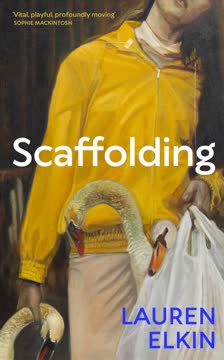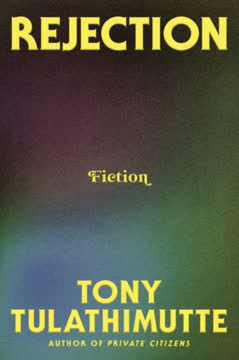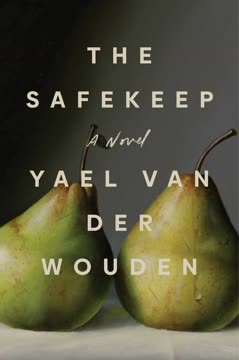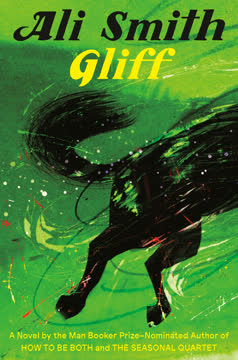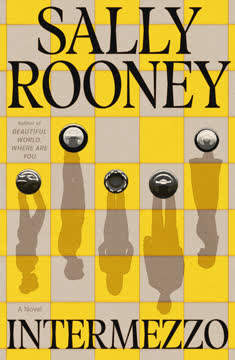Plot Summary
New Neighbours, Old Walls
On a sweltering Paris morning, Anna, a psychoanalyst on medical leave, meets her new neighbour Clémentine, who is struggling with the building's entry code and her own sense of belonging. Their conversation, casual yet charged, reveals the subtle intimacy of strangers sharing a threshold. Anna's apartment, mid-renovation and layered with the traces of previous occupants, becomes a symbol of lives in transition. The city outside is noisy, the air thick with heat and pollution, and both women are caught between the comfort of routine and the anxiety of change. Their first encounter is marked by curiosity, vulnerability, and the unspoken hope that new friendships might help scaffold their own uncertain futures.
Tea, Tattoos, and Confessions
Anna invites Clémentine for tea, and their conversation quickly deepens. They discuss art, psychoanalysis, sexuality, and the invisible architecture of desire. Clémentine's tattoos and openness about her queer identity contrast with Anna's more reserved self-presentation. The two women share secrets—first loves, family histories, and the ways they feel out of place in their own lives. Anna's pride in her home is tinged with the knowledge that it is still unfinished, both physically and emotionally. The afternoon sun, the city's distant noise, and the ritual of tea and cigarettes create a cocoon for confessions. Their connection is immediate, but layered with the complexities of their respective relationships and personal histories.
The Apartment's Past Lives
Anna reflects on the apartment's previous owner, a feminist psychoanalyst whose presence lingers in the wallpaper, the kitchen tiles, and the very air. The process of renovation becomes a metaphor for Anna's own attempts to rebuild after loss—a miscarriage that has left her unmoored. The apartment, with its Haussmannian details and stubbornly ugly kitchen, is a battleground between past and present, memory and aspiration. Anna's sense of home is fragile, shaped by the ghosts of those who lived there before and the imagined futures that may never arrive. The act of stripping wallpaper and planning new spaces is both an assertion of agency and a confrontation with grief.
Marriage Deferred, Grief Unveiled
Anna's marriage to David, once a source of stability, is now marked by absence and uncertainty. David's work in London and Anna's medical leave create a physical and emotional distance. The miscarriage, never fully spoken, becomes the silent center of their relationship. Anna's sessions with her analyst, Esther, are filled with questions about happiness, control, and the limits of self-understanding. The rituals of daily life—running, cleaning, watching the city—are attempts to impose order on chaos. Anna's longing for normalcy is shadowed by the fear that nothing will ever be the same, and that the scaffolding of her marriage may not hold.
Running, Routine, and the Bakery Man
Anna's morning runs through Buttes-Chaumont and her encounters with the bakery man become touchstones in her solitary days. The bakery man, an older, enigmatic figure, pays for her bread and offers brief, wordless companionship. Their exchanges are ritualistic, a way of marking time and asserting presence in a city that often feels indifferent. Anna's attention to her body—exercise, beauty routines, the performance of femininity—reflects both a desire for control and an awareness of impermanence. The city's layers, its buildings and their histories, mirror Anna's own sense of being one inhabitant among many, each leaving traces, each eventually replaced.
August Alone in Paris
With friends and family away for the summer, Anna is left alone in Paris, her solitude both a relief and a burden. The city's heat, the noise of neighbours' parties, and the intensification of smells and sounds heighten her sense of dislocation. Anna's thoughts turn to past relationships, the ways in which people move in and out of each other's lives, and the impossibility of ever fully knowing another person. The light in the evenings, the rituals of separation and reunion, and the memories of lost loves all converge in a mood of melancholic introspection. Anna's longing is diffuse, directed as much toward imagined futures as toward the people she has lost.
Transference and Tarot
Clémentine returns the book she borrowed and initiates a conversation about transference, the psychoanalytic concept that shapes how we relate to those closest to us. Their discussion, weaving together theory and personal experience, reveals the ways in which desire, identity, and narrative are constructed and reconstructed in relationships. Clémentine's skepticism about psychoanalysis and her embrace of more fluid, revolutionary ideas challenge Anna's professional certainties. Their intimacy grows, marked by shared cigarettes, confessions about sexuality, and the playful exchange of stories. The boundaries between analyst and analysand, friend and lover, become increasingly porous.
Lost Loves, Lingering Ghosts
Anna revisits her old journals and the memory of Jonathan, a former lover whose absence has haunted her for years. The intensity of their relationship, its abrupt end, and the unresolved questions about identity, trauma, and belonging resurface as Anna navigates her current loneliness. The city itself becomes a palimpsest of past encounters, each street and building layered with memories of love, loss, and longing. Anna's reflections on Jonathan's family, their history of displacement and survival, and the ways in which personal and collective trauma are transmitted across generations deepen her sense of being both rooted and adrift.
The Scaffolding Rises
The building's exterior is covered in scaffolding for mandatory refacing, echoing the internal renovations in Anna's life. The noise, dust, and intrusion of workers become metaphors for the upheaval of grief, desire, and change. Anna's interactions with neighbours, the rhythms of the city, and the ongoing work in her apartment all contribute to a sense of suspended inhabitation—a life lived in anticipation of something that never quite arrives. The scaffolding, both literal and figurative, is a structure that supports transformation but also obscures, disrupts, and unsettles.
Feminist Signs, Feminist Fights
Clémentine becomes involved with a group of feminist activists, the colleuses, who paste slogans about violence against women on the city's walls. Anna is drawn into their world, participating in nocturnal acts of resistance that make visible the hidden stories of abuse and survival. The city itself becomes a canvas for collective memory and protest. Anna's engagement with the colleuses, her conversations with Clémentine about activism, and her reflections on the limits of psychoanalysis as a tool for social change all contribute to a growing sense of solidarity and purpose. The personal and political become intertwined, each shaping the other.
The Past Returns Unexpectedly
At a party, Anna is stunned to discover that Clémentine's boyfriend Jonathan is the same Jonathan from her past. The shock of recognition, the awkwardness of shared history, and the unresolved emotions between Anna and Jonathan create a new triangle of desire and loyalty. Their clandestine affair rekindles old passions and wounds, while Clémentine's presence complicates questions of fidelity, honesty, and self-knowledge. The boundaries between past and present, self and other, are blurred, and Anna is forced to confront the ways in which her desires are shaped by loss, repetition, and the longing for what cannot be possessed.
Desire's Complicated Geometry
Anna and Jonathan's affair unfolds in the midst of ongoing renovations, both literal and emotional. Their encounters are charged with nostalgia, guilt, and the thrill of transgression. Anna's reflections on desire, fidelity, and the impossibility of ever fully knowing or possessing another person are informed by her psychoanalytic training and her lived experience. The affair is both a return to a lost self and an exploration of new possibilities. Clémentine's role as both lover and rival complicates Anna's sense of agency and responsibility. The geometry of desire is revealed to be unstable, shifting, and always incomplete.
Breaking, Building, Becoming
As the kitchen wall comes down and the apartment is transformed, Anna's internal landscape is similarly unsettled. The process of breaking and rebuilding becomes a metaphor for personal growth, the necessity of letting go in order to make space for something new. The workers' stories, the discovery of old calendars and photographs, and the daily rituals of cleaning and caring for the space all contribute to a sense of renewal. Anna's relationships—with David, Jonathan, and Clémentine—are similarly in flux, each offering different forms of intimacy, support, and challenge. The act of making a home is revealed to be ongoing, provisional, and always subject to change.
Love, Infidelity, and Identity
Anna's entanglements with Jonathan and Clémentine reach a crisis point, forcing her to confront the limits of desire, the ethics of honesty, and the meaning of fidelity. Conversations about love, jealousy, and the stories we tell ourselves reveal the ways in which identity is constructed through relationships. Anna's psychoanalytic insights are tested by the messiness of real life, where theory gives way to feeling and certainty dissolves into ambiguity. The city, with its layers of history and its ever-changing population, becomes a mirror for the multiplicity of selves that each person contains. Love is shown to be both sustaining and destabilising, a force that both binds and unravels.
The City's Secret Messages
The colleuses' slogans proliferate across Paris, making visible the hidden violence and resilience of women's lives. Anna's walks through the city become journeys through collective memory, each sign a reminder of the stories that are usually kept silent. The city's architecture, its bridges and scaffolding, its monuments and ruins, all become sites of reflection on loss, survival, and the possibility of change. Anna's engagement with the city's secret messages deepens her sense of connection to others, even as it underscores the persistence of pain and the difficulty of healing. The personal and the political are revealed to be inseparable.
The Kitchen Reborn
With the renovations complete, Anna's apartment is transformed. The new kitchen, open and filled with light, becomes a symbol of possibility and renewal. The ghosts of the past recede, replaced by the tangible evidence of change and the promise of new beginnings. Anna's return to work, her reconnection with old friends, and her ongoing relationships with David and Clémentine all signal a movement toward integration and acceptance. The process of making a home is revealed to be both an act of will and an act of faith, a commitment to living with uncertainty and embracing the unknown.
Letting Go, Letting In
As Anna navigates the aftermath of her affairs and the shifting dynamics of her friendships, she comes to accept the limits of self-knowledge and the necessity of living with ambiguity. The city, the apartment, and her own body are all sites of ongoing transformation, shaped by desire, loss, and the passage of time. Anna's reflections on motherhood, work, and love are marked by a new humility and openness. The scaffolding of her life—both literal and metaphorical—remains, but she learns to see it not as a barrier, but as a structure that allows for growth, change, and connection.
The Scaffolding Comes Down
With the building's scaffolding finally removed, Anna's view of the city is restored. The apartment, the neighbourhood, and her own sense of self are all changed, but the process of transformation is ongoing. Anna's relationships—with David, Clémentine, and the city itself—are marked by acceptance, gratitude, and the recognition that resolution is always provisional. The traces of past loves, losses, and desires remain, but they are integrated into a larger narrative of survival and renewal. The city's walls, once covered in slogans, now bear witness to the ongoing work of living, loving, and becoming.
Characters
Anna
Anna is the novel's narrator, a Franco-American psychoanalyst living in Paris. Her life is marked by a profound sense of in-betweenness: between cultures, languages, and identities. After a miscarriage and a period of medical leave, Anna finds herself adrift, questioning her marriage, her vocation, and her sense of self. Her relationships—with her husband David, her neighbour Clémentine, and her former lover Jonathan—become sites of both comfort and crisis. Anna's psychoanalytic training shapes her introspection, but her lived experience often outpaces her theories. She is deeply empathetic, prone to melancholy, and driven by a longing for connection that is always tinged with the awareness of loss. Anna's journey is one of learning to live with ambiguity, to accept the limits of self-knowledge, and to find meaning in the ongoing work of becoming.
Clémentine
Clémentine is Anna's neighbour and eventual lover, a young art history student with a passion for activism and a fluid sense of identity. She is both confident and vulnerable, her outward radicalism masking deeper uncertainties about love, desire, and belonging. Clémentine's involvement with feminist activism, her openness about her sexuality, and her willingness to challenge Anna's assumptions make her a catalyst for change. Her relationships—with Jonathan, Anna, and the colleuses—are marked by a desire for freedom and a resistance to fixed roles. Clémentine embodies the energy and contradictions of a new generation, seeking to remake the world even as she struggles to understand her own place within it.
David
David is Anna's husband, a lawyer whose work takes him to London, creating a physical and emotional distance in their marriage. He is practical, steady, and loving, but also somewhat opaque—his inner life is often inaccessible to Anna. David's absence becomes a space in which Anna's desires and doubts proliferate. He represents both the comfort of stability and the threat of stagnation. David's relationship with Anna is tested by grief, infidelity, and the challenges of communication. Ultimately, he is a figure of endurance, embodying the possibility of renewal and the necessity of accepting what cannot be changed.
Jonathan
Jonathan is Anna's former lover and Clémentine's current partner, a man whose presence destabilises the boundaries between past and present, self and other. He is marked by a history of trauma—familial, cultural, and personal—and his relationships are shaped by a deep ambivalence about belonging and desire. Jonathan is both passionate and withholding, his love for Anna never fully resolved, his commitment to Clémentine always provisional. He is haunted by the legacy of loss and displacement, and his search for wholeness often leads him into repetition and self-sabotage. Jonathan's reappearance in Anna's life forces her to confront the unfinished business of her own heart.
Esther
Esther is Anna's psychoanalyst, a figure of calm, patience, and inscrutability. She offers Anna a space in which to explore her grief, her desires, and her uncertainties, but rarely provides direct answers. Esther's presence is both grounding and unsettling, her silences prompting Anna to confront the limits of language and the necessity of living with ambiguity. She represents the therapeutic process itself—a structure that supports transformation but cannot guarantee resolution. Esther's role in Anna's life is that of a witness, a guide, and a reminder that the work of self-understanding is never complete.
The Bakery Man
The bakery man is an older, enigmatic figure who becomes a fixture in Anna's daily life. Their ritualised encounters—he pays for her bread, she accepts his silent companionship—offer a form of connection that is both comforting and elusive. He is a symbol of the city's anonymous intimacy, the ways in which strangers can become part of the fabric of one's life. The bakery man's presence is a reminder of the importance of small rituals, the possibility of kindness without expectation, and the enduring mystery of other people.
Anna's Mother
Anna's mother appears primarily through phone calls and memories, offering both comfort and frustration. She represents the weight of family history, the expectations and disappointments that shape Anna's sense of self. Their relationship is marked by love, misunderstanding, and the unspoken transmission of trauma and resilience. Anna's mother is a figure of both continuity and difference, her presence a reminder of the ways in which the past persists in the present.
Max Weisz
Max is Jonathan's father, a prominent psychoanalyst whose work on desire, loss, and infidelity shapes much of Anna's thinking. He is both a personal and intellectual influence, his theories providing a framework for understanding the complexities of love and longing. Max's own history of womanising and ambivalence about commitment complicates his role as a guide. He embodies the tension between theory and practice, the allure and danger of intellectualising emotion.
The Colleuses
The colleuses are a group of feminist activists who paste slogans about violence against women on the city's walls. They represent the power of collective action, the importance of making hidden stories visible, and the ongoing struggle for justice and recognition. Their work is both public and deeply personal, a form of resistance that transforms the city and those who participate in it. The colleuses are a reminder that change is possible, but always incomplete.
The Apartment
The apartment itself is a character in the novel, a space marked by the traces of past lives, ongoing renovations, and the hopes and disappointments of its current inhabitants. It is both a refuge and a battleground, a place where grief, desire, and renewal are enacted. The apartment's walls, floors, and windows bear witness to the cycles of loss and becoming that define Anna's life. It is a symbol of the self—always under construction, never fully finished, and always haunted by what has come before.
Plot Devices
Scaffolding as Metaphor
The recurring image of scaffolding—both literal and metaphorical—structures the novel's narrative. The building's refacing, the apartment's renovation, and the ongoing work of psychoanalysis all serve as forms of scaffolding: temporary structures that support transformation but also obscure, disrupt, and unsettle. Scaffolding represents the necessity of living with incompleteness, the ways in which change is always provisional and subject to reversal. It is a reminder that growth requires both support and the willingness to endure mess, noise, and uncertainty. The process of building and rebuilding, of breaking down walls and creating new spaces, mirrors the work of self-understanding and the ongoing negotiation of relationships.
Psychoanalytic Structure
The novel is deeply informed by psychoanalytic theory, particularly the ideas of transference, repetition, and the unconscious. Anna's sessions with Esther, her reflections on her own training, and her engagement with the theories of Lacan and Max Weisz provide a framework for exploring the complexities of desire, loss, and identity. The narrative is structured around the movement between past and present, the ways in which unresolved experiences resurface and demand to be worked through. The limits of language, the impossibility of full self-knowledge, and the necessity of living with ambiguity are central themes, enacted both in the characters' relationships and in the novel's form.
Urban Palimpsest
Paris is more than a backdrop; it is a living, breathing character whose layers of history, memory, and activism shape the lives of its inhabitants. The city's buildings, streets, and walls are palimpsests, bearing the traces of past lives, collective struggles, and ongoing transformation. The colleuses' slogans, the memories embedded in architecture, and the rituals of daily life all contribute to a sense of the city as an archive of longing, loss, and hope. The urban landscape mirrors the characters' internal landscapes, each marked by the interplay of permanence and change.
Feminist Activism and Collective Voice
The work of the colleuses—pasting feminist slogans on the city's walls—serves as both a plot device and a thematic anchor. Their activism makes visible the hidden stories of violence, survival, and resistance that shape women's lives. The collective voice of the colleuses challenges the isolation of individual suffering, transforming personal pain into public protest. Their work is both an act of mourning and a gesture of hope, a reminder that change is possible but always incomplete. The interplay between personal and political, private and public, is a central dynamic in the novel.
Nonlinear, Fragmented Narrative
The novel's structure is nonlinear and fragmented, reflecting the ways in which memory, desire, and grief disrupt the flow of time. The narrative moves between past and present, dream and reality, confession and analysis. This fragmentation mirrors the characters' internal states, their struggles to make sense of experience, and the impossibility of ever achieving a final, coherent narrative. The use of journals, dreams, and multiple perspectives further complicates the story, inviting readers to inhabit the uncertainty and ambiguity that define the characters' lives.
Analysis
Lauren Elkin's Scaffolding is a profound meditation on the unfinished business of living—how we build, inhabit, and continually reconstruct our identities, relationships, and homes. Through the intertwined stories of Anna, Clémentine, Jonathan, and David, the novel explores the ways in which desire, grief, and memory shape the architecture of our lives. The recurring motif of scaffolding—supportive yet disruptive, temporary yet necessary—captures the essence of transformation: we are always in the process of becoming, never fully complete, always haunted by what has come before. The novel's engagement with psychoanalytic theory, feminist activism, and the lived realities of urban life creates a rich tapestry in which the personal and political are inseparable. Elkin's characters are marked by longing, loss, and the search for connection, but also by resilience, creativity, and the capacity for renewal. Scaffolding ultimately suggests that meaning is found not in resolution, but in the ongoing work of living with ambiguity, embracing change, and finding solidarity in the shared struggles of others. The city's walls, like the walls of the self, bear witness to both pain and possibility, reminding us that we are never truly alone.
Last updated:
Review Summary
Scaffolding receives mixed reviews, with praise for its beautiful writing, exploration of desire, and French aesthetic. Critics appreciate its depth in examining relationships, psychoanalysis, and feminist themes. However, some find it overly intellectual and lacking in plot. The novel's structure, set in Paris across two timelines, intrigues readers but occasionally feels disjointed. While some hail it as a literary masterpiece, others struggle with its heavy focus on Lacanian theory and infidelity. Overall, it's seen as an ambitious, thought-provoking work that may not appeal to all readers.
